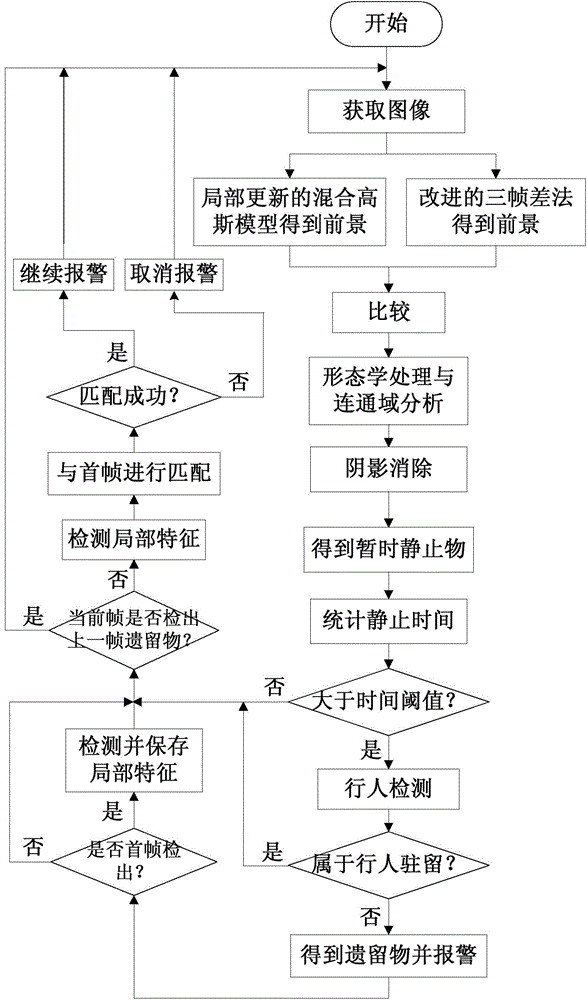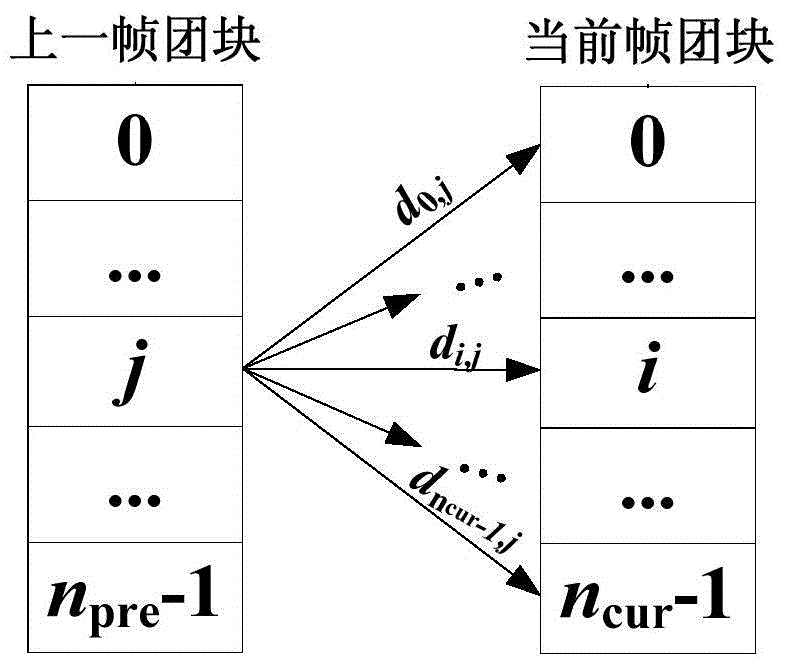Detection method for remnants in complex environment
A detection method and complex environment technology, applied in the field of detection of remnants in complex environments, can solve problems such as missing detection, high computational complexity, and weak anti-interference ability
- Summary
- Abstract
- Description
- Claims
- Application Information
AI Technical Summary
Problems solved by technology
Method used
Image
Examples
Embodiment Construction
[0061] The present invention will be further described in detail below in conjunction with the embodiments and the accompanying drawings, but the embodiments of the present invention are not limited thereto.
[0062] Such as figure 1 , a carryover detection method for complex environments, comprising the following sequence of steps:
[0063] The mixed Gaussian background modeling method based on local update is adopted for the video frame image: when no remnant is detected in the scene, the mixed Gaussian background model is updated according to the general method; when the remnant is detected in the scene, the remnant is made Foreground mask image M, let the current frame image be I, and the mixed Gaussian background image updated by the previous frames be B, then construct the image U for current frame background model update according to the following formula:
[0064]
[0065] Match the current frame image with the updated mixed Gaussian background model, and segment ...
PUM
 Login to View More
Login to View More Abstract
Description
Claims
Application Information
 Login to View More
Login to View More - R&D
- Intellectual Property
- Life Sciences
- Materials
- Tech Scout
- Unparalleled Data Quality
- Higher Quality Content
- 60% Fewer Hallucinations
Browse by: Latest US Patents, China's latest patents, Technical Efficacy Thesaurus, Application Domain, Technology Topic, Popular Technical Reports.
© 2025 PatSnap. All rights reserved.Legal|Privacy policy|Modern Slavery Act Transparency Statement|Sitemap|About US| Contact US: help@patsnap.com



